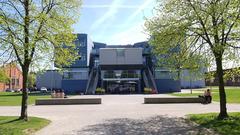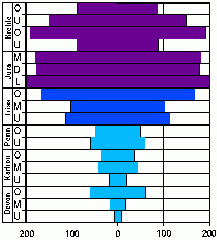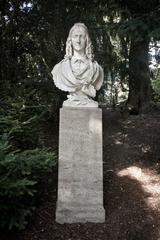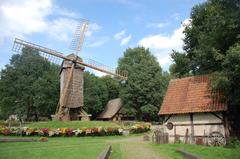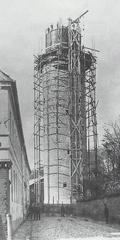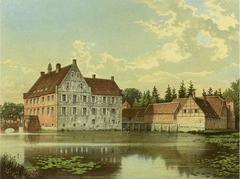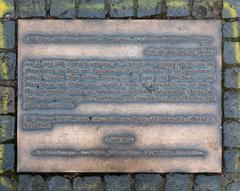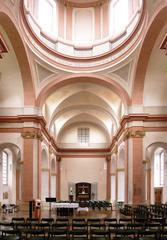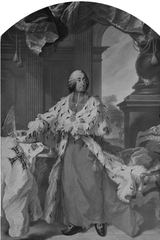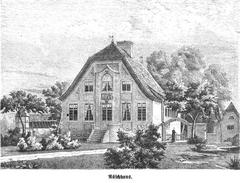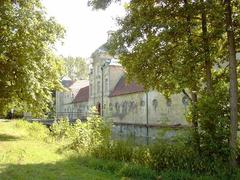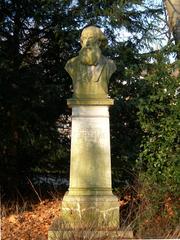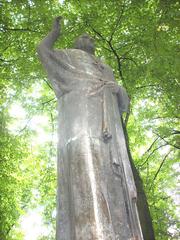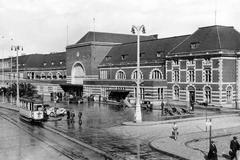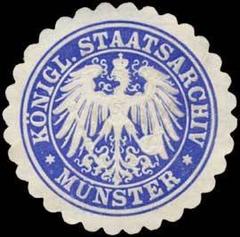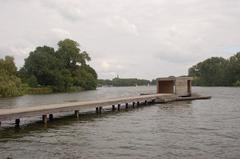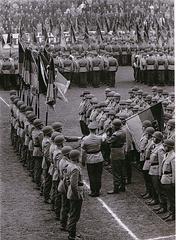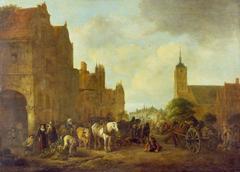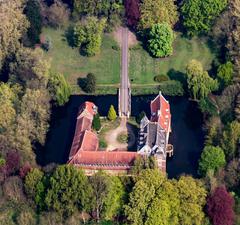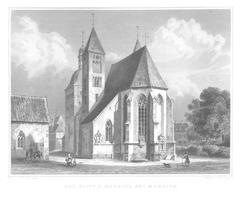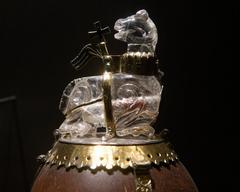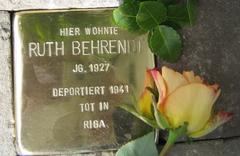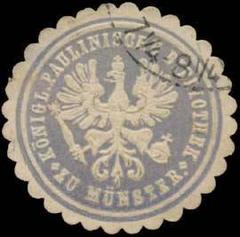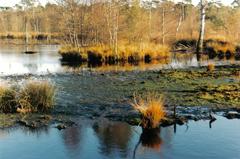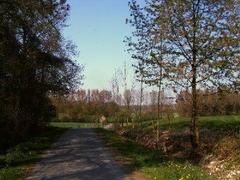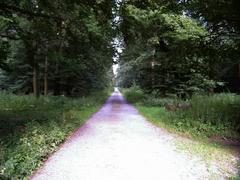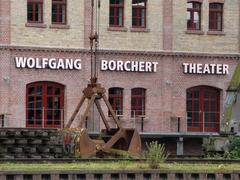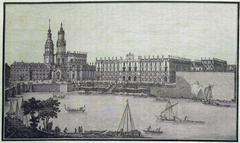Haus Wiek Visiting Hours, Tickets, and Münster Historical Sites Guide
Date: 14/06/2025
Introduction to Haus Wiek and Its Significance in Münster
Nestled in the picturesque Münsterland region of Germany, Haus Wiek stands as a remarkable testament to the area’s medieval and early modern heritage. This historic moated manor—situated on the outskirts of Münster in the district of Albachten—offers a window into Westphalian aristocratic life and evolving architectural traditions. Originally constructed in the late Middle Ages and rebuilt in 1612, Haus Wiek exemplifies the “Wasserburgen” (water castles) characteristic of the region’s noble estates. Its sturdy masonry, timber framing, and Renaissance-Baroque details reflect its transformation from defensive stronghold to elegant rural residence, while the surrounding gardens and natural landscapes enhance its scenic appeal.
Though Haus Wiek is a private residence with restricted interior access, its exterior and grounds can be admired from public paths, providing excellent opportunities for scenic walks and photography. Visitors interested in Haus Wiek’s history, accessibility, special events, and nearby attractions like Schloss Münster and Burg Hülshoff will find this guide invaluable. For updates on events or tours, consult official Münster tourism resources or the Audiala app (Münster History, Komoot, stadt-muenster.de, nrw-tourist.de).
Table of Contents
- Introduction
- Origins and Early History
- Architectural Evolution
- Role in Münster’s Social and Political Life
- 19th and 20th Century Transformations
- Preservation and Cultural Significance
- Visiting Haus Wiek: Tickets, Hours, and Accessibility
- Travel Tips and Nearby Attractions
- Visuals and Media
- Frequently Asked Questions (FAQ)
- Conclusion and Call to Action
- Planning Your Visit
- References
Origins and Early History
Haus Wiek’s roots stretch back to the late Middle Ages. Situated near Münster, it is emblematic of the “Wasserburgen” tradition—fortified manor houses with moats—built for protection and status by noble families. The estate’s position near waterways and trade routes contributed to its prominence during Münster’s rise as a Hanseatic city and episcopal seat in the 14th century (Münster History).
Architectural Evolution
Haus Wiek’s architecture evolved from a medieval stone core into a Renaissance and Baroque residence, featuring decorative façades, gables, and large windows. The 18th and 19th centuries saw the addition of landscaped gardens and auxiliary buildings, reflecting Münsterland’s regional styles and the owners’ rising fortunes (Münster Architecture).
Role in Münster’s Social and Political Life
Historically, Haus Wiek was the seat of influential landed families involved in local governance under the Prince-Bishopric of Münster. While not directly involved in the Peace of Westphalia negotiations, its owners were part of the social circles that bolstered Münster’s diplomatic significance during the Thirty Years’ War. The manor’s archives provide insights into the rural elite’s life and political networks (Peace of Westphalia).
19th and 20th Century Transformations
Following 19th-century secularization and Prussian reforms, Haus Wiek underwent significant changes in ownership and agricultural use. It adapted to modern practices, and though Münster suffered extensive WWII bombings, Haus Wiek remained mostly unscathed, later facing challenges from urban expansion (Timeline of Münster).
Preservation and Cultural Significance
Today, Haus Wiek is recognized as a cultural landmark in Münsterland. It is protected under Denkmalschutz, ensuring the preservation of its architectural integrity and heritage value. The estate features in regional heritage trails and exhibitions dedicated to Westphalian manor houses (Westphalian Heritage).
Visiting Haus Wiek: Tickets, Hours, and Accessibility
- Opening Hours: Haus Wiek is a private residence. There are no regular visiting hours for the interior, but the exterior can be viewed year-round from public footpaths.
- Tickets: No tickets are required for exterior viewing. Occasionally, cultural events or heritage days offer limited access—check official tourism sources for updates.
- Accessibility: The grounds are accessible via public paths, suitable for walkers and cyclists. Some paths accommodate wheelchairs and strollers.
- Special Events: Local heritage days or cultural events may grant special access. Updates are posted on official channels (Münster Tourism).
Travel Tips and Nearby Attractions
Haus Wiek is best reached by car or bicycle from Münster’s city center (about 10 km/20–30 min). Public transport to Albachten is limited; cycling is highly recommended given Münster’s extensive bike network (Komoot). Nearby attractions include Schloss Münster, Prinzipalmarkt, Burg Hülshoff, and other castles along the Münsterland Castles Route (Münsterland Castles Route). The surrounding countryside offers walking and cycling paths, ideal for family outings and nature lovers.
Visuals and Media
High-quality photos and virtual tours of Haus Wiek can be found on Komoot and Freizeitmonster. The images highlight the estate’s moated setting, traditional brickwork, and lush surroundings. Suggested alt text for images: “Haus Wiek visiting hours,” “Münster historical sites,” “Westphalian manor house exterior.”
Frequently Asked Questions (FAQ)
Q: Can I tour the inside of Haus Wiek?
A: No, Haus Wiek is privately owned. Interior tours are not available except during special events.
Q: Are there entrance fees for Haus Wiek?
A: No, exterior viewing is free. Special events may require tickets.
Q: What are the best ways to reach Haus Wiek?
A: By bicycle or car from Münster. Cycling routes are well-marked; limited parking is available in Albachten.
Q: Is Haus Wiek accessible for those with mobility issues?
A: The surrounding paths are generally flat and suitable for strollers and some mobility aids.
Q: Are dogs allowed?
A: Yes, dogs are welcome on public paths but must be leashed.
Q: Can I combine my visit with other sites?
A: Yes, the area is ideal for day trips combining several castles and Münster’s historical attractions (Germany Travel).
Conclusion and Call to Action
Haus Wiek exemplifies Münsterland’s noble legacy, blending historical architecture, cultural significance, and scenic landscapes. Its status as a private residence limits interior access, but its exterior and grounds are accessible year-round via public paths. For those interested in heritage sites, cycling, or rural Westphalian culture, Haus Wiek is a rewarding destination.
To plan your visit:
- Consult Münster’s official tourism website for updates.
- Use Komoot for cycling and walking routes.
- Download the Audiala app for audio guides and event alerts.
Explore more about Münster’s castles and manor houses by following our related content and social media channels.
Planning Your Visit to Haus Wiek
Location and Accessibility
Haus Wiek lies about 10 km west of Münster’s city center, in Albachten. It is a highlight on popular cycling routes and is also reachable by car (Komoot; Tourism on the Edge). Public transport options are limited, so cycling is recommended for a scenic approach.
Visiting Hours and Ticket Information
As a private estate, Haus Wiek does not have regular visiting hours or ticket sales. Visitors may view the exterior from public paths at any time. Special events or open days are occasionally announced on Stadt Münster’s tourism portal.
Best Times to Visit
Late spring to early autumn (May–September) is ideal for enjoying the gardens and landscape. Early mornings and late afternoons offer the best light for photography (Komoot; Freizeitmonster).
Recommendations and Etiquette
- Respect private property: Do not enter the manor or grounds unless clearly permitted.
- Facilities: No restrooms or cafés at Haus Wiek; amenities available in Albachten or Münster.
- Parking: Available in Albachten; cycling is encouraged.
- Dogs: Allowed on leashes.
- Guided tours: Not regularly available; check for special events.
Suggested Activities
- Cycling Tour: Take the Münsterland “100 Castles Route” for a full-day excursion.
- Walking Excursion: From Albachten village, enjoy a peaceful walk through the countryside.
- Photography: Best vantage points are from public paths.
- Combine with nearby sites: Include Nordkirchen Palace or Burg Hülshoff for a comprehensive heritage tour (Germany Travel).
Environmental Considerations
Support Münsterland’s commitment to sustainable tourism by minimizing waste, using bicycles, and respecting conservation efforts (Tourism on the Edge).
References and Further Reading
- Münster History
- Münster Architecture
- Peace of Westphalia
- Timeline of Münster
- Westphalian Heritage
- Münster Tourism
- Visiting Haus Wiek
- NRW Tourist Münster Attractions
- Komoot Haus Wiek Highlight
- Freizeitmonster Haus Wiek
- Germany Travel Münster
- Stadt Münster Tourism Home
- Tourism on the Edge Münster
